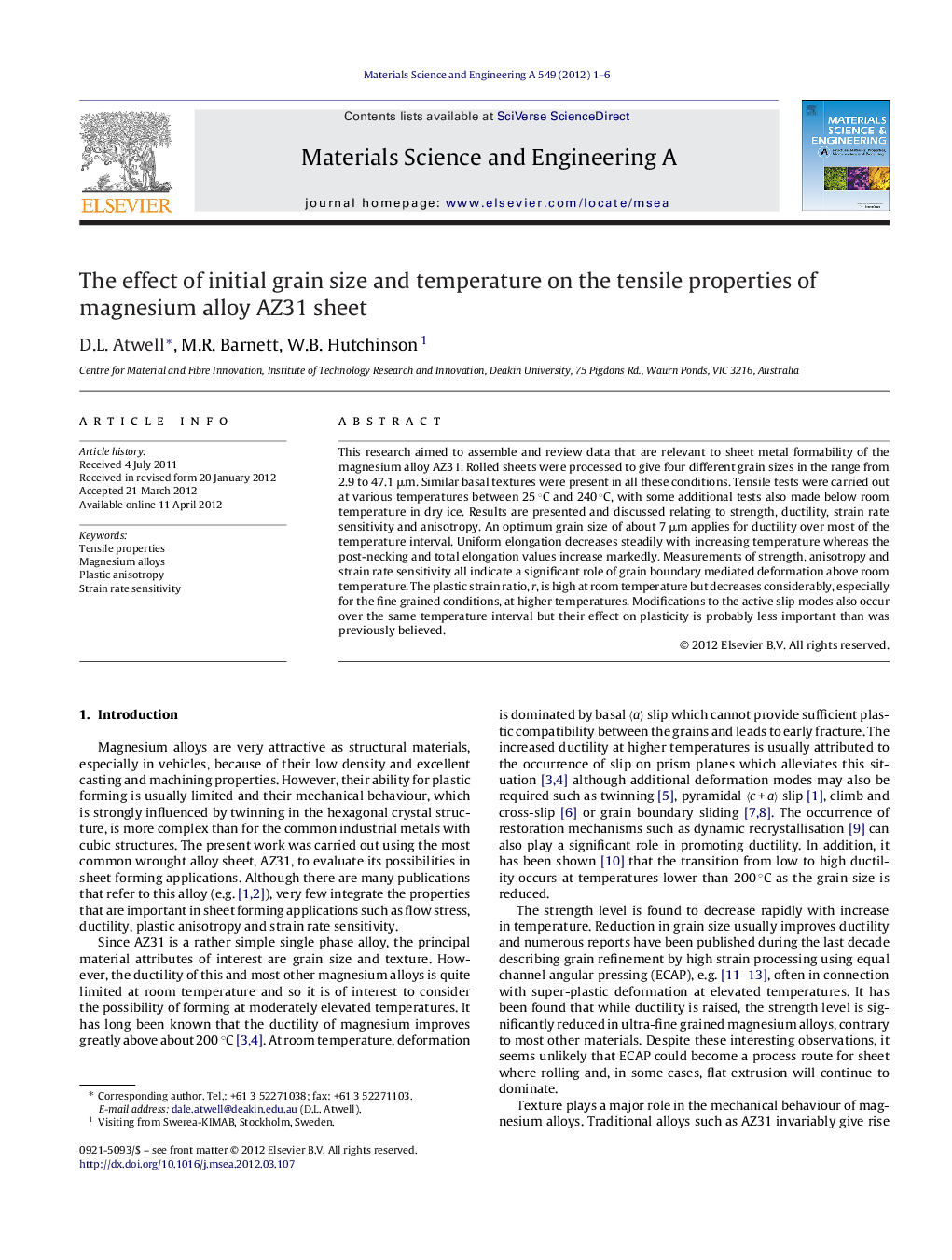| Article ID | Journal | Published Year | Pages | File Type |
|---|---|---|---|---|
| 1577205 | Materials Science and Engineering: A | 2012 | 6 Pages |
This research aimed to assemble and review data that are relevant to sheet metal formability of the magnesium alloy AZ31. Rolled sheets were processed to give four different grain sizes in the range from 2.9 to 47.1 μm. Similar basal textures were present in all these conditions. Tensile tests were carried out at various temperatures between 25 °C and 240 °C, with some additional tests also made below room temperature in dry ice. Results are presented and discussed relating to strength, ductility, strain rate sensitivity and anisotropy. An optimum grain size of about 7 μm applies for ductility over most of the temperature interval. Uniform elongation decreases steadily with increasing temperature whereas the post-necking and total elongation values increase markedly. Measurements of strength, anisotropy and strain rate sensitivity all indicate a significant role of grain boundary mediated deformation above room temperature. The plastic strain ratio, r, is high at room temperature but decreases considerably, especially for the fine grained conditions, at higher temperatures. Modifications to the active slip modes also occur over the same temperature interval but their effect on plasticity is probably less important than was previously believed.
► We examine the effect of grain size and temperature on magnesium AZ31 formability. ► We see optimal ductility at grain sizes between 5 and 10 μm, for low temperatures. ► High temperature grain size effect on strength suggests grain boundary sliding. ► Grain boundary sliding can also explain the observed changes in r-value.
